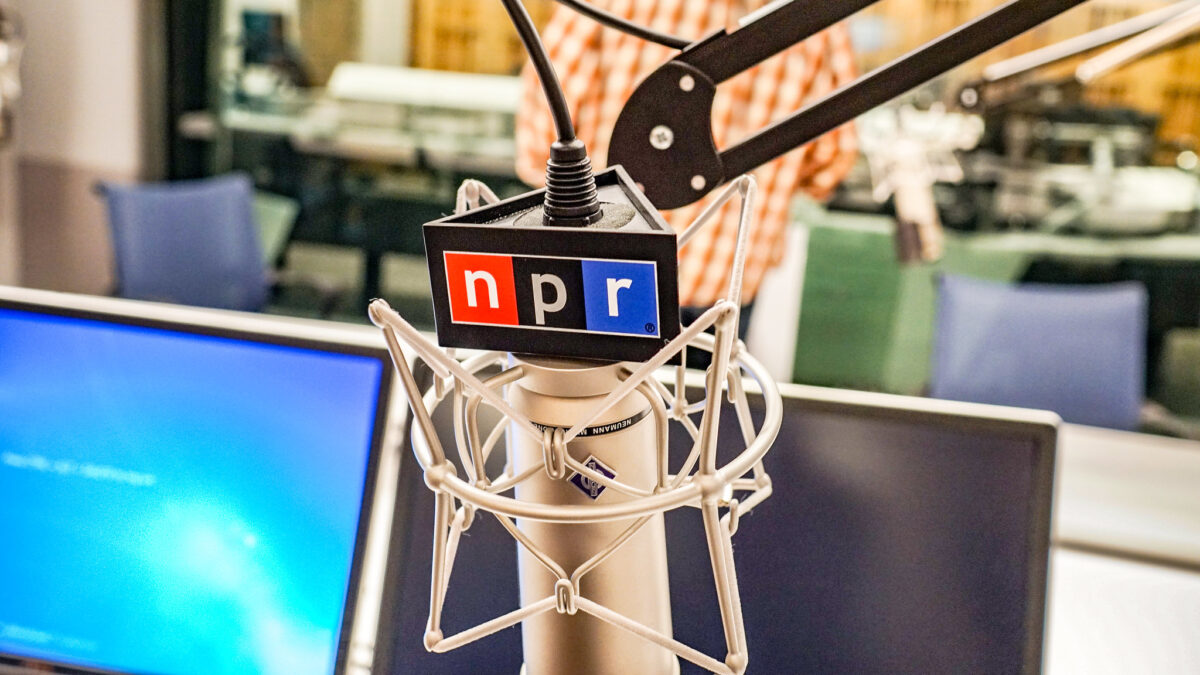
There is now widespread agreement that social media is a problem. In describing his hiring at The Atlantic and abrupt firing at the behest of a Twitter mob, Kevin Williamson concludes that the problem is how “the rage-fueled tribalism of social media, especially Twitter, has infected the op-ed pages and, to some extent, the rest of journalism.”
That’s a good summary of this dystopian phase of the new media. Despite the promise that the Internet would supercharge the propagation of new ideas, it seems to be having the opposite effect, narrowing people’s minds and crippling their ability to process new ideas and cope with ideological dissent.
But what if the problem with social media isn’t the medium, but the “social” part? Every social media company sells itself to us by talking about how they’re bringing the world together and helping to “build communities.” Mark Zuckerberg talks about this sort of thing endlessly. But what if all this community-building is the problem? What if it is just functioning as an engine of conformity, tribalism, and small-mindedness?
In other words, what if the problem with the Twitter mob isn’t Twitter but the mob? The PR hype for social media puts a lot of emphasis on the value of getting people together in large groups. But if we observe how people actually behave in large groups, we might question the wisdom of doing so.
Let’s start, by way of contrast, with how people tend to behave when they acquire information on their own. When you read an article or, heaven forbid, a book, you are inherently alone. The author and his arguments are there on the page and you absorb them, think about them, react to them, with no audience to influence you or judge your reaction. It is just you and an idea.
Or take a one-on-one conversation, an exchange of ideas where you have no reason for engaging your conversational partner other than to listen to and try to understand what he is saying, and for him to do the same with you. There is no point in grandstanding or putdowns or rhetorical point-scoring because these things would alienate the only audience you have, which is the other person.
Put people into a group, however, and what happens? People in this kind of public exchange are no longer talking to one another. They’re playing to the crowd. To be more exact, they’re playing to their crowd. They’re talking for the approval of the mob, whether it’s the woke social justice mob or the trigger-the-snowflake, anti-PC #MAGA mob.
Watching how debates play out on social media reminds me of a description I heard from a reporter in Iraq shortly after the U.S. invasion. When he interviewed Iraqis one on one, he said, he often heard reasonable and moderate views, including a willingness to cooperate with the new government and patiently ride out the U.S. occupation. But whenever he started to interview someone in the street, a crowd would begin to gather, and once the crowd got big enough, the people in it—particularly the young men—quickly became more vehement, bellicose, and anti-American. They did it because they were performing for the crowd, trying to out-do one another to show what tough guys they were.
This is what social media is training all of us to do, and you can see it reflected in the real world. Take Josh Blackman’s description of his encounter with student protesters at a CUNY law school talk. He attempted to engage them in conversation to counter the hysterical caricatures they had of his views. Most of them resolutely resisted being drawn into conversation or debate.
The African-American student I mentioned earlier said, ‘I don’t support this guy’ but ‘I want to hear him speak.’ The protesters tried to shame him for attending. He continued, ‘I want to ask him a very hard question. And we should all try to ask him very hard questions. Like about the notion of legal objectivity.’ Sensing the event had taken a different direction, I said, ‘Let’s talk about that.’… At that point, the protesters left the room and, I learned, they marched to the dean’s office to complain.
Once the conversation turned to something substantive, they couldn’t stick around because that would deflate the public performance of outrage they were all keeping up for each others’ benefit—just as they have gotten used to doing on social media.
Social media as an engine of conformity—though, as Jonah Goldberg observes, it’s our odd contemporary version, in which conformity is packaged as rebellion. We call them Twitter “followers” for a reason. We just flatter participants with the idea that it is other people who are following them. But this effect is not felt only or even primarily in big groups. It’s not just about enforcing conformity to one mainstream narrative.
Like never before, the Internet makes it possible to connect together small groups of likeminded people, to find the handful of fellow enthusiasts for even the most obscure hobby or conspiracy theory or splinter political sect. The profusion of these little online subcultures can promote intellectual diversity, but it can also produce its own odd kind of conformity. It takes the lone eccentric and nestles him into the bosom of a new online community—which can turn out to be a small-minded small town of its own.
A man who might have been content in the old days to be a majority of one is now part of a community and faces a peculiar new psychological pressure to fit in with it, which can be all the greater to the extent that the group’s members don’t fit in with everybody else. Cult leaders know this all too well: the more different the in-group is from the rest of the world, the more hostility they face from the outside, the more they band together and gain identity from conformity to their esoteric beliefs and practices.
“Tribalism” is just the name we use for “community” when it goes wrong. This is why I’m not reassured by the prospect of a balkanization of social media into little communities or subgroups who don’t even have Facebook in common. It weakens the one big narrative but strengthens the loyalties of the tribe—and deepens the gap between one tribal narrative and another.
That, I think, is the most troubling implication of the Kevin Williamson case. When the Left closes off its cultural institutions to the Right and becomes more insular, one of the consequences is that both sides become narrower and more cliquish. One of the important roles of nonpartisan institutions that publish people from both sides of the debate is that they become forums where thinkers can depart from their own orthodoxies.
A writer for, say, Breitbart (on the Right) or The Nation (on the Left) is likely to stick closer to the in-house party line, or to provoke debate within a relatively narrow range. He will have an eye toward what the publication’s ideologically committed readership (not to mention his colleagues) are likely to regard as an unacceptable deviation. I have a feeling The Atlantic is going to discover this, too. Now that they have shown they will kowtow to leftist Twitter mobs, the next step is that the mobs will go after insufficiently woke liberals. Having purged the conservatives, they will turn on each other and end up with narrower latitude to think within the confines of their orthodoxy.
Ellsworth Toohey, the apostle of conformism and villain of Ayn Rand’s novel The Fountainhead, expressed his ideal as a world “where the thought of each man will not be his own, but an attempt to guess the thought in the brain of his neighbor who’ll have no thought of his own but an attempt to guess the thought of the next neighbor who’ll have no thought—and so on…around the globe.”
She understood well the temptation to see a new or controversial idea and, in deciding one’s reaction, to wonder how others will react, how it will stack up against the consensus of one’s social group or intellectual clique. In the era of social media, there is no need to wonder, because the group’s response will be algorithmically collated, reinforced, and broadcast across your social network with lightning speed, in the very same medium where you probably heard about the new idea in the first place. Social media collapses the distance between private thinking and the verdict of the crowd, because the crowd is always with you.
Ayn Rand described the theme of The Fountainhead as the conflict between individualism and collectivism “not in politics, but in men’s souls.” Social media amplifies the collectivism in men’s souls—and that is its fundamental problem.
Robert Tracinski is a senior writer for The Federalist. His work can also be found at The Tracinski Letter.









